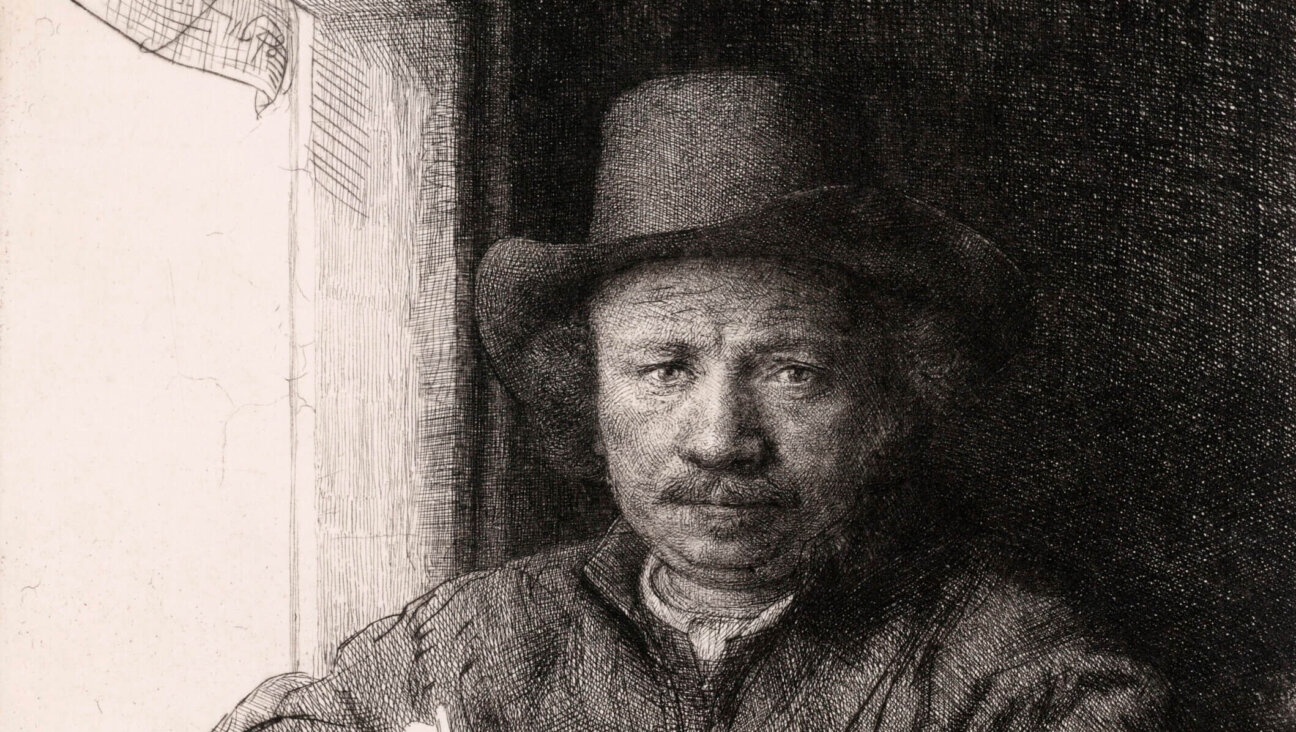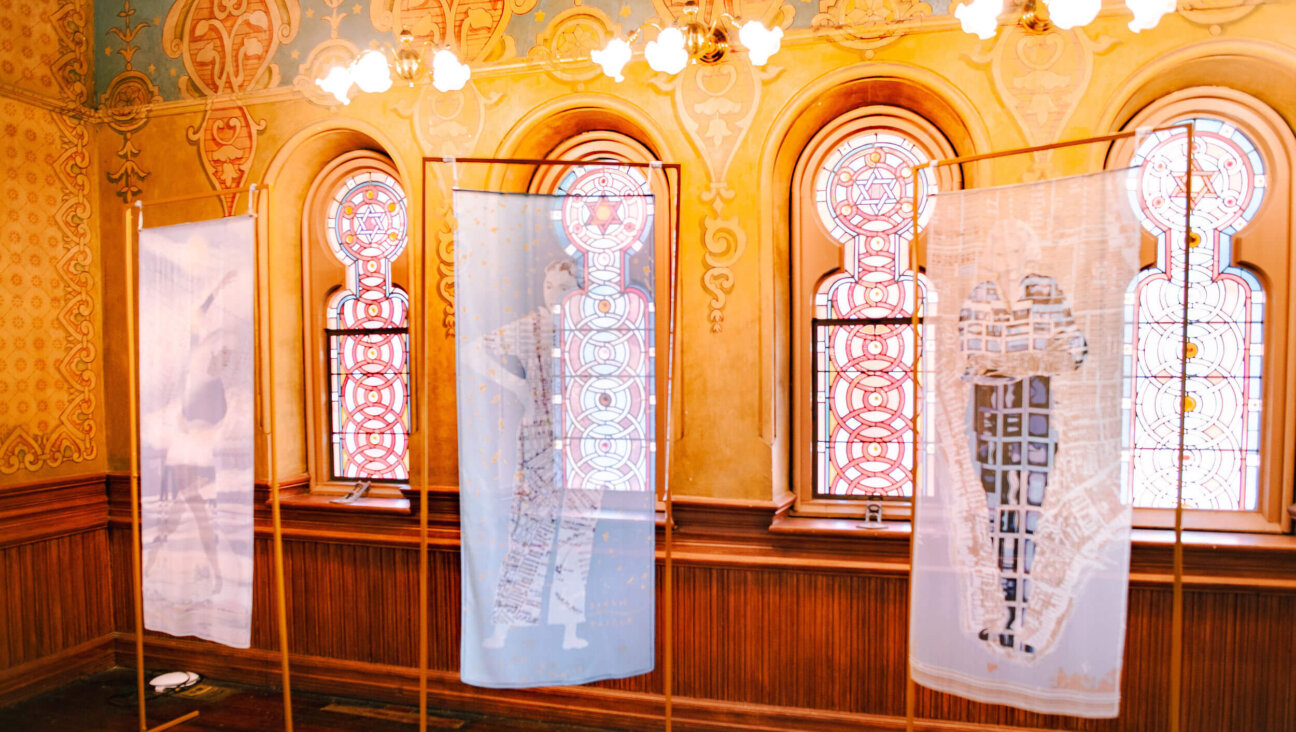‘The Zone of Interest’ asks: Why would a family want to live at Auschwitz?
Jonathan Glazer’s masterpiece follows the life of Nazi Commandant Rudolf Höss

Jonathan Glazer’s film shows the idyllic country on the threshold of hell. Photo by A24
It’s Rudy’s birthday and his children guide him, blindfolded, down a set of stairs to the garden.
There, in the grass, by the small swimming pool, near the greenhouse, is a canoe. He can’t sit in it, though. The paint is still fresh, and he can’t sully his uniform. At least not yet. When he returns from work and takes off his boots, a member of his staff will rinse them in an outdoor spigot, the water running with blood.
Rudy’s job is no real mystery, even if we only see him at work once, the skull on his collar patch in focus while, offscreen, a charnel house collects more bones. He is Rudolf Höss, the commandant of Auschwitz and, as a reverse shot just after the canoe gifting reveals, he has made a handsome home right on the threshold of hell, the familiar barbed wire-crowned fences and watchtowers abutting his property.
In The Zone of Interest, Jonathan Glazer’s stunning domestic drama about the Höss family’s idyllic life, Rudolf will make considerable efforts to keep his brood in this place where he can expose them to nature and where the sky burns orange with the exhaust of mechanized killing.
Glazer’s fourth feature, very freely adapted from Martin Amis’ novel of the same name, was filmed on location at Auschwitz, with production designer Chris Oddy reproducing the Höss homestead a couple hundred yards from the actual residence. To film it, Glazer, who also wrote the screenplay, hid cameras in the set while he and his cinematographer, Lukasz Zal, sequestered themselves in a bunker, watching the footage remotely and letting the actors play out scenes, in German and briefly Polish, in real time. The result is static shots of the house’s daily business, which, mirroring the separation of the English Jewish director from his German cast, never directly shows the barbarity that earns the family its keep in Poland.
But there is no true firewall between the home and the barracks.
Höss’ wife, Hedwig (Sandra Hüller, excellently monstrous), sorts through loose clothing for their baby — clothes delivered fresh from the camps and, though it goes unremarked, off the bodies of murdered infants. After dark, Höss’ oldest son, Claus, is in the top bunk with a flashlight. When his younger brother asks what he’s looking at, he answers “teeth” — the false teeth and bridges of their neighbors, whom they rarely see, but whom they often hear screaming to the distant pops of their dispatching.
There can be no doubt, as there is in the noxious fiction of John Boyne’s Boy in the Striped Pajamas, that any member of the SS commandant’s family, no matter how young, was entirely oblivious to the horrors at their doorstep. But though Hedwig blithely models the fur coat of a Jewess and the boys study the dental work of the gassed, when Rudolf (a Teutonically-detached Christian Friedel, with a severe undercut) finds a piece of a human jawbone in the river where they fish and picnic, he scrubs himself and his children clean of the contagion.
Hedwig and Rudolf are hardly the haunted Macbeths. The only damned spots that concern them are those on the poorly trimmed lilac bushes on the camp’s perimeter.
Still, they suffer — he is under tremendous pressure, she is outraged that he’s being transferred to Oranienburg back in Germany, where the daily administration of murders will be a more theoretical exercise. Rudolf is able to escape a desk job in the end, even if, in a dazzling rupture of time and space, he glimpses how history will regard his efforts.
Glazer’s movie is an extraordinary work of scholarship and artful cinematic evasion. It adds a new dimension to Hannah Arendt’s “Banality of Evil,” which mostly imagined Eichmann’s ink blotter. Here is a more jarring conceit — the embrace of hands-on atrocity when it allows for a measure of comfort: a greenhouse, fresh-grown cabbage, country air and a pioneer existence on the Reich’s new Eastern Front. When the boots are washed of gore and the smokestacks stop belching black, the children can learn about herons and flowers in the garden. All may be well.
Eschewing the tracking shots of Claude Lanzmann or Alain Resnais, Glazer’s patient camerawork, paired with long stretches of a black or red screen set to Mica Levi’s keening score, is unlike that of any other Holocaust movie, embedding viewers with the enemy and inviting them to weigh the desires that put this family on the devil’s path. Even in its studied craft, the film largely denies its audience the artifice of techniques that offer distance. Thirty years to the date after the black-and-white melodrama of Schindler’s List, it dares to remind us this all happened in color — or, in luminous night vision sequences — in complete darkness.
The Zone of Interest suggests that while the Nazis’ dehumanizing program could twist normal souls to do the unspeakable, the factors that kept the Reich going through its worst crimes were far more mundane.
Would you live near Auschwitz if it had a nice garden? It’s the sort of crazed hypothetical no one would ever consider. But, not too long ago, many people did, answering with a resounding “Yes.”
The film The Zone of Interest debuts Dec. 15 in select theaters.

















